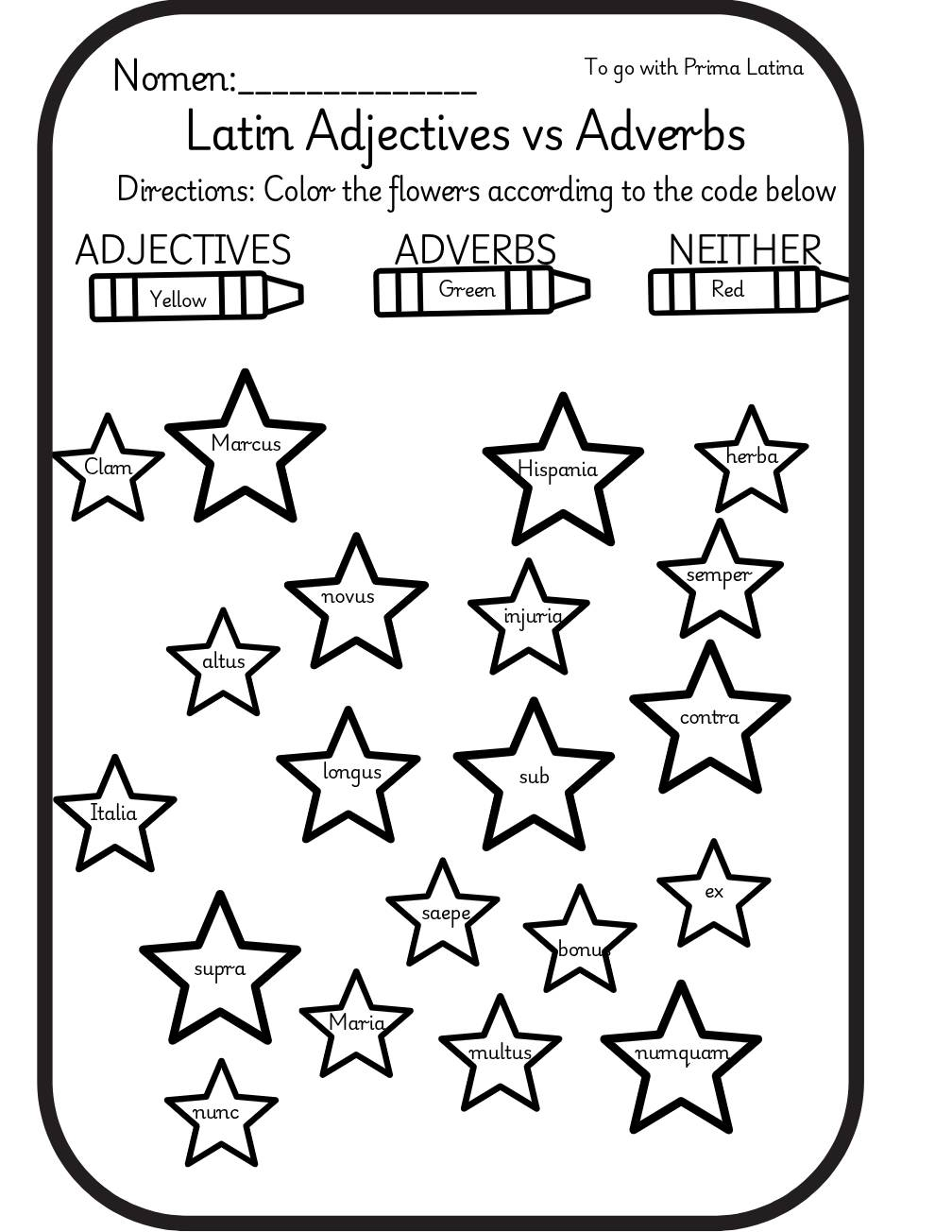As a Latin teacher, I always aim to keep lessons energetic and meaningful. Grammar doesn’t have to feel like rote memorization—it can be an opportunity for young students to explore language and express themselves. That’s the spark that led me to create the Latin Adjective and Adverbs worksheet resource, perfect for students in grades K–8. Teachers Pay Teachers+1

The Classroom Moment That Inspired It
One lesson stands out. After introducing the simple sentence canis currit—“the dog runs”—my students translated it without much enthusiasm. Sensing their disinterest, I invited them to make it more vivid. What if the dog is big? Fast? Happy? Their curiosity was immediate. They eagerly experimented: celer canis currit laete (“the fast dog runs happily”), magnus canis currit fortiter (“the big dog runs bravely”), even parvus canis currit stulte (“the little dog runs foolishly”). In that moment, Latin felt alive and creative.
What the Resource Offers
This color worksheet was designed to complement the Prima Latina curriculum—though the curriculum itself isn’t required to use it Teachers Pay Teachers. It supports lessons roughly around units 11–15. Its main focus: distinguishing between Latin adjectives and adverbs, helping students recognize how they function differently in sentences Teachers Pay Teachers.
Why I Value Adjectives and Adverbs
Adjectives and adverbs add depth and detail to sentences. They help even the youngest learners go beyond simple phrases. Words like “fast,” “happy,” or “quietly” invite a richer understanding of expression. Plus, students begin to notice connections across languages—for instance, fortis (“brave”) relates to “fortitude,” and clarus (“clear”) links to “clarity.”
How I Use This Resource in Class
- Younger students (K–2): We focus on identifying whether a word describes what something is (an adjective) or how something is done (an adverb). The color worksheet makes this game-like and hands-on.
- Older students (grades 3–8): We take the forms they recognize and build new sentences—creating translations that feel dynamic and fun. It’s also a great tool for formative assessment or a quick activity in a co-op or language class.
What Makes It Special
- Tailored for K–8, so you can use it with a wide range of ages and adjust complexity as needed.
- Affordable at $3.00, making it a budget-friendly option for homeschoolers or classrooms. Teachers Pay Teachers
- Flexible and easy to integrate—even without additional curriculum materials.
Final Reflection
Teaching Latin is most rewarding when students feel empowered to play with language. This adjective vs. adverb worksheet helps them do just that—seeing grammar as a tool for expression rather than a chore. Latin stops being “just another subject” and starts feeling relevant and enjoyable.
If you’re looking for a simple, effective way to bring movement and meaning into early Latin lessons, this resource is a wonderful choice.

